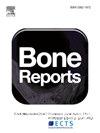Inpatient rehabilitation fracture liaison service (FLS) improves outcomes for secondary prevention of hip fractures
IF 2.6
Q3 ENDOCRINOLOGY & METABOLISM
引用次数: 0
Abstract
Background
Secondary fracture prevention is a well-defined treatment-gap within osteoporosis management. Fracture Liaison Service (FLS) coordinates the management and treatment of patients following a fragility fracture in order to close the care gap. We aim to assess the efficacy of the FLS initiative in the management and treatment of patients following fragility hip fracture in the inpatient rehabilitation setting.
Methods
This is a diagnostic, retrospective cohort study using a deidentified, electronic health record database. In the extraction process, patients with fragility hip fractures were identified. Patients after major trauma or malignancy were excluded. The prevalence of initiation and adherence to anti-osteoporotic treatments, including alendronate, risedronate, zoledronate, denosumab, romosozumab, and teriparatide, was compared between the rehabilitation FLS initiative patients and patients from other hospitals without FLS.
Results
A total of 4,124 patients with fragility hip fractures were identified between 2017 and 2021. The FLS initiative showed significantly higher rates of treatment initiation, with 72.1 % of patients receiving pharmacological therapy following a hip fracture, compared to 45.1 % in hospitals without FLS (p < 0.001). Patients in the FLS group also demonstrated higher rates of good adherence and lower rates of poor adherence (p < 0.001). Denosumab was the most commonly prescribed anti-osteoporotic treatment within the FLS initiative.
Conclusions
The FLS in the inpatient rehabilitation setting was found to be highly effective in improving time to treatment initiation and adherence rates to prescribe anti-osteoporosis therapy. These findings demonstrate the role of FLS in addressing the osteoporosis treatment gap following fragility hip fracture.
住院康复骨折联络服务(FLS)改善髋部骨折二级预防的结果
背景:在骨质疏松管理中,二级骨折预防是一个明确的治疗缺口。骨折联络服务(FLS)协调脆性骨折后患者的管理和治疗,以缩小护理差距。我们的目的是评估FLS在住院康复环境中管理和治疗脆性髋部骨折患者的疗效。方法:这是一项诊断性、回顾性队列研究,使用一个未识别的电子健康记录数据库。在拔牙过程中,识别出脆性髋部骨折患者。排除重大创伤或恶性肿瘤后的患者。比较了康复FLS患者和其他医院无FLS患者开始和坚持抗骨质疏松治疗的患病率,包括阿仑膦酸钠、利塞膦酸钠、唑来膦酸钠、地诺单抗、罗莫索单抗和特立帕肽。结果2017年至2021年共发现4124例脆性髋部骨折患者。FLS计划显示出更高的治疗起始率,72.1%的患者在髋部骨折后接受药物治疗,而没有FLS的医院为45.1% (p <;0.001)。FLS组患者也表现出较高的良好依从性和较低的不良依从性(p <;0.001)。在FLS计划中,Denosumab是最常用的抗骨质疏松治疗药物。结论在住院康复环境中使用FLS可有效提高患者的治疗起始时间和依从性。这些发现证明了FLS在解决脆性髋部骨折后骨质疏松症治疗缺口中的作用。
本文章由计算机程序翻译,如有差异,请以英文原文为准。
求助全文
约1分钟内获得全文
求助全文
来源期刊

Bone Reports
Medicine-Orthopedics and Sports Medicine
CiteScore
4.30
自引率
4.00%
发文量
444
审稿时长
57 days
期刊介绍:
Bone Reports is an interdisciplinary forum for the rapid publication of Original Research Articles and Case Reports across basic, translational and clinical aspects of bone and mineral metabolism. The journal publishes papers that are scientifically sound, with the peer review process focused principally on verifying sound methodologies, and correct data analysis and interpretation. We welcome studies either replicating or failing to replicate a previous study, and null findings. We fulfil a critical and current need to enhance research by publishing reproducibility studies and null findings.
 求助内容:
求助内容: 应助结果提醒方式:
应助结果提醒方式:


